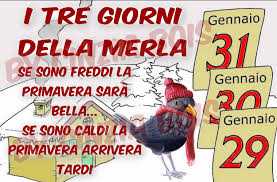Rather listen than read? ⇓ Podcast below ⇓
Today’s language nugget/pronunciation landmine is brought to you by the Italian Vowel  Sound A. Such an innocent looking letter. You’d think it’d be easy. And yet, it fools many a student (especially, those whose first language is English).
Sound A. Such an innocent looking letter. You’d think it’d be easy. And yet, it fools many a student (especially, those whose first language is English).
A good nickname for this sound would be “Don’t call me Al”… inspired by Paul Simon’s song, “You can call me Al”, because you absolutely cannot pronounce the Italian word “al” (a combination of the words a and il) the way you would in English, and most people do, at least at first.
Anatomy of the Italian Vowel Sound A
Here’s how to avoid this pitfall – In Italian, the vowel letter A has one sound, and one sound only: it always sounds like the “a” in father, /ah/. In English “a” has  different sounds, the most common of which are the short sound (as in cat, nap, and snack) and the long sound (think of bake, name, and place).
different sounds, the most common of which are the short sound (as in cat, nap, and snack) and the long sound (think of bake, name, and place).
The correct pronunciation of the Italian A is like the short English “o” in the words rock, box, and top (or if the flavor of your English is British, the letter “a” in the word after). Since the Italian Vowel Sound A is never pronounced like it is in (American) English, when you come across a word that contains A, it’s all too easy to say it with an Englishy-sounding spin… even more so if it’s a cognate, like “al”, which far too many people call Al 😉
[Side note: For Spanish speakers, the Italian vowel A is a walk in the park, because the sound is identical in the two languages – A sounds like /ah/ both in Spanish and Italian.]
Meet the A-Team – Examples of commonly mispronounced Italian A words
 Be on the lookout for these guys … al (a + il), Alberto, albergo, caffè, a, altro, alto, italiano, pantaloni, animale, caldo, bambino, camera, stanza, fotografia, piatto, passare, da, d’accordo, piazza, antico, grande, tavolo, grazie, passeggiata, vacanza (Word Glossary below)
Be on the lookout for these guys … al (a + il), Alberto, albergo, caffè, a, altro, alto, italiano, pantaloni, animale, caldo, bambino, camera, stanza, fotografia, piatto, passare, da, d’accordo, piazza, antico, grande, tavolo, grazie, passeggiata, vacanza (Word Glossary below)
Suggestions for getting the Italian Vowel Sound A right
As with other language nuggets and pronunciation landmines I’ve highlighted in this series, practice makes perfect, and as I like to say, repetition is the mother of improvement. The Italian Vowel A is not hard to pronounce. It is, as always, a question of looking before you leap and thinking before you speak. Practicing reading Italian and pronouncing it correctly is a great way to practice and to train or retrain your brain and your mouth muscles to pronounce correctly.
 Consider making a list of target Italian words containing the Vowel Sound A, such as the ones above. Another great idea is to record and then listen to yourself reading the words to get a clearer idea of which landmines are tripping you up and where you need more practice. The best way to do this is to record yourself progressively, so that you can hear your improvement over time, which is always the best encouragement!
Consider making a list of target Italian words containing the Vowel Sound A, such as the ones above. Another great idea is to record and then listen to yourself reading the words to get a clearer idea of which landmines are tripping you up and where you need more practice. The best way to do this is to record yourself progressively, so that you can hear your improvement over time, which is always the best encouragement!
Most importantly, be patient and kind with yourself. Rome wasn’t built in a day, and language skills aren’t acquired overnight. Time and perseverance will get you where you want to go – as the Italian idiom states, Chi va piano va sano e va lontano – (slow and steady wins the race). And, remember to have fun with it along the way!
– Are you saying it correctly?? Listen to the mini podcast of this Language Nugget to hear and practice saying these words right!
Leave a comment! Is the Italian Vowel Sound A easy or tricky for you? Any words that really trip you up? Let me know what other Italian pronunciation landmines you’d like me to cover. Love to hear your comments!
Word Glossary
- a | at, to
- al (a + il) | at the, to the
- Alberto | Albert
- albergo | hotel
- caffè | coffee
- altro | other
- alto | tall
- italiano | Italian
- pantaloni | pants
- animale | anial
- caldo | hot
- bambino | child, kid, baby
- camera | room, bedroom
- stanza | room
- fotografia | photograph, photography
- piatto | plate, dish
- passare | to pass
- da | from
- d’accordo | agreed, OK
- piazza | plaza, square
- antico | ancient, antique
- grande | big, great
- tavolo | table
- grazie | thank you, thanks
- passeggiata | a walk
- vacanza | vacation














































